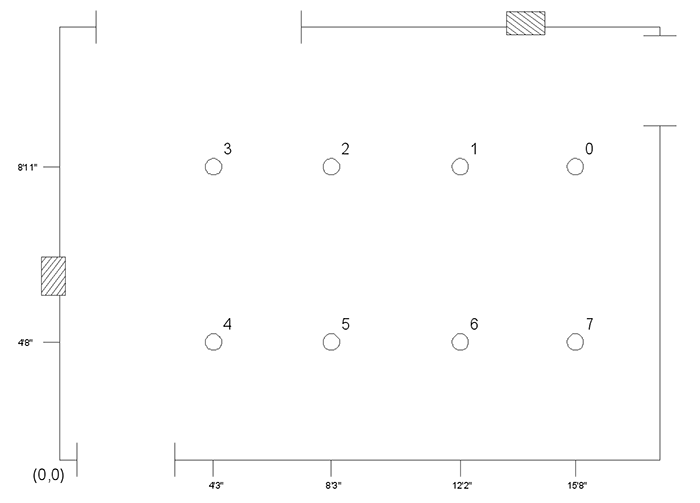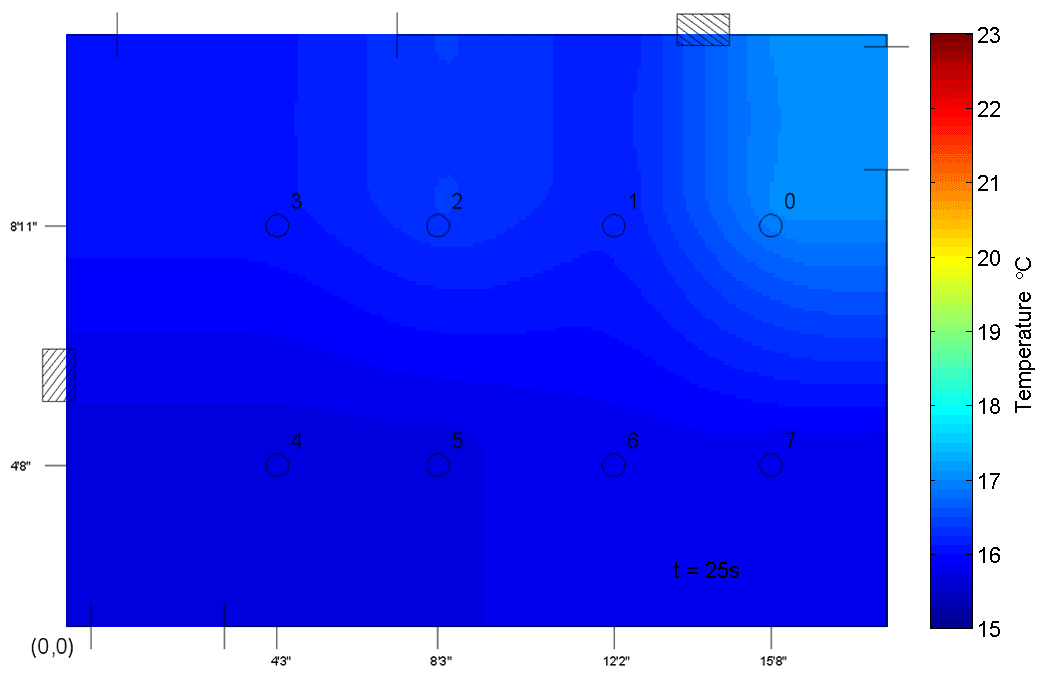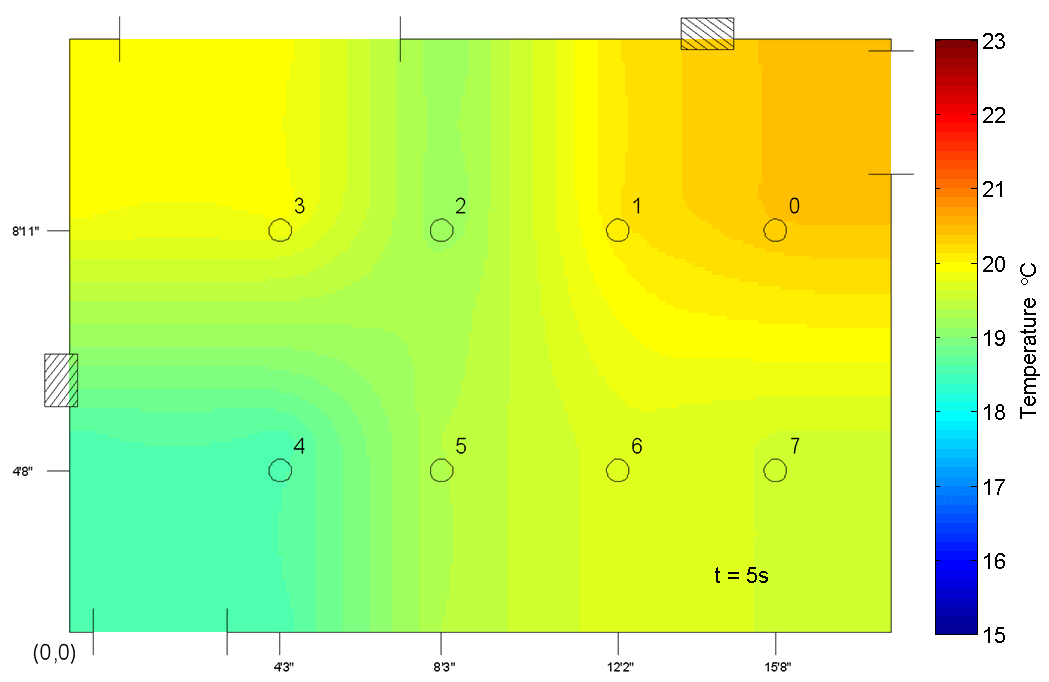JonathanWagenet
HVAC System Air Temperature Measurement
Group: Jordan Briggs, Sean Snyder, Jonathan Wagenet
Purpose
- Use instrumentation methods to evaluate sensor variation and test air circulation in a room.
Requirements
- Create test plan for evaluating sensors and taking temperature measurements.
- Run control test for thermocouples.
- Evaluate thermocouple measurements for impact of error and noise.
- Take long temperature measurements under changing system conditions.

Floor plan of tested room, including positions of doors, air vents (hashed boxes), and thermocouple locations (circles).
Procedures
- Arrange thermocouples in room for varied measurement.
- Take hour long measurement of room while thermostat is heating up.
- Take ten minute measurement with room open to breezeway along left doors.
- Take control test with thermocouples at constant temperature.

Heatmap of heating test. Room is closed to outside environment with thermostat set to high heat.
Results
- The control test measurements are used to evaluate data accuracy:
- About 0.1°C of bias error is observed from the thermocouples compared to control.
- Measurement noise adds up to a standard deviation of about 0.1°C.
- Animated heat-maps of the thermal data are prepared in MatLab:
- Approximations of temperature gradients in rooms are interpolated/extrapolated from the eight thermocouple measurements.
- Each time segment is layered in an animation for both datasets.

Heat map of cooling test. Room is open to breezeway between doors on left side with thermostat off.
Caveats
- Bias error estimation for the sensors is limited by the accuracy of the control thermometer.
- Extrapolated data around edges of room are likely very inaccurate, and are left for the visualization.
- More sensors or better placed sensors would yield a better set of data.